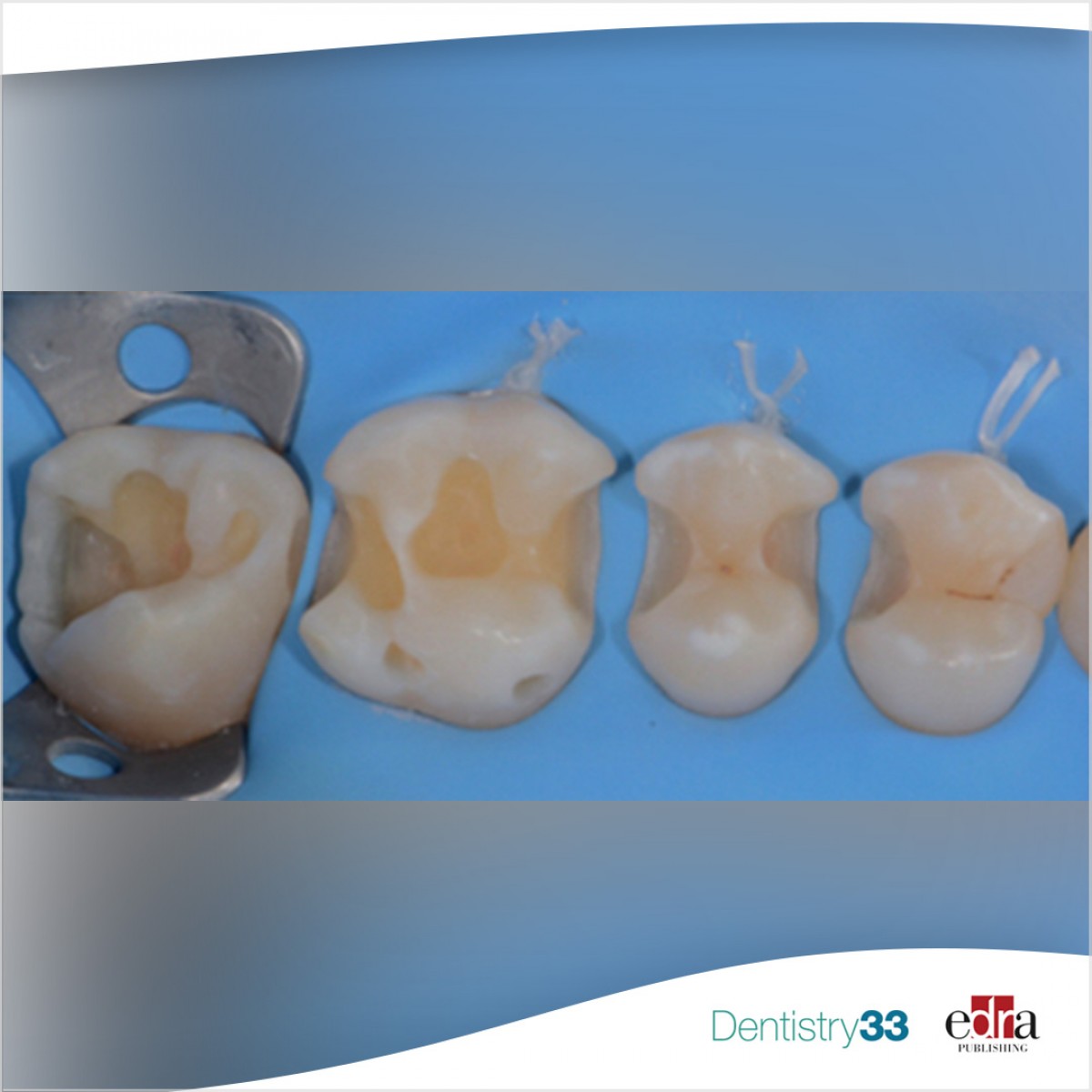
Direct posterior restorations: a minimally invasive and predictable solution
Allegra Comba
18-year-old patient with multiple carious lesions located in the first quadrant.
After the radiographic examination, the surgical field was isolated with a rubber dam and the carious lesions were removed with diamond burs with decreasing grain size and multi-blade tungsten carbide burs.
Finally, to finish the cavity preparation, the occlusal margins were finished with low-grain diamond burs mounted on a red ring contra-angle and the interproximal margins were finished and polished with low-grain diamond burs mounted on the EVA handpiece.
Once the cavity preparation was completed, the reconstruction procedures were performed using a direct technique. In order to obtain a correct interproximal anatomy, on each dental element, a sectional metal matrix was placed with a wooden wedge and a separator ring.
Then a 3-step etch-and-rinse adhesive system was chosen and applied with etching for 30 seconds of the enamel and 15 seconds of the dentin followed by primer and bonding and layering of the composite resin (Venus Diamond, Kulzer).
After interproximal wall reconstruction, 0.5mm of flowable composite was placed at the bottom of the cavity followed by 2mm layers of composite. Once the restorations were completed and the glycerin gel polymerization performed, the restorations were completed by finishing and polishing the composite to achieve adequate morphological integration and excellent marginal adaptation.
The 3-month follow-up showed an excellent aesthetic and functional integration of the direct reconstructions.
Below you can see all the clinical steps
 Tag
Tag
 Related articles
Related articles
Author: Andrea Baldi
A 21-year-old male patient came to my attention reporting sensibility related to sweet and cold on the 4th quadrant. The general medical history revealed that the patient spent many months in...
 Read more
Read more
Editorials 10 October 2025
With proud smiles and crisp white coats, ninety-three learners from the DDS Class of 2029 and the International Dentist Pathway Class of 2028 marked the start of their dental careers at the UCSF...
Periodontology 10 October 2025
Continuous professional development (CPD) in Periodontology refers to the overall framework of opportunities that facilitate a life-long learning practice, driven by the learner-practitioner and...
TheraBreath, the #1 alcohol-free mouthwash brand in the U.S.*, has introduced a new line of dentist-formulated, clinically tested toothpastes designed to support professional oral care...
News 10 October 2025
New officers and trustees were installed at the Minnesota Dental Association’s Leadership Conference on September 19 in Minneapolis.
News 10 October 2025
Smartee Denti-Technology today announced that Professor Gang Shen, its Chief Scientist and Executive President of TaiKang ByBo Dental, has once again been named to the World’s Top 2% Scientists...


























